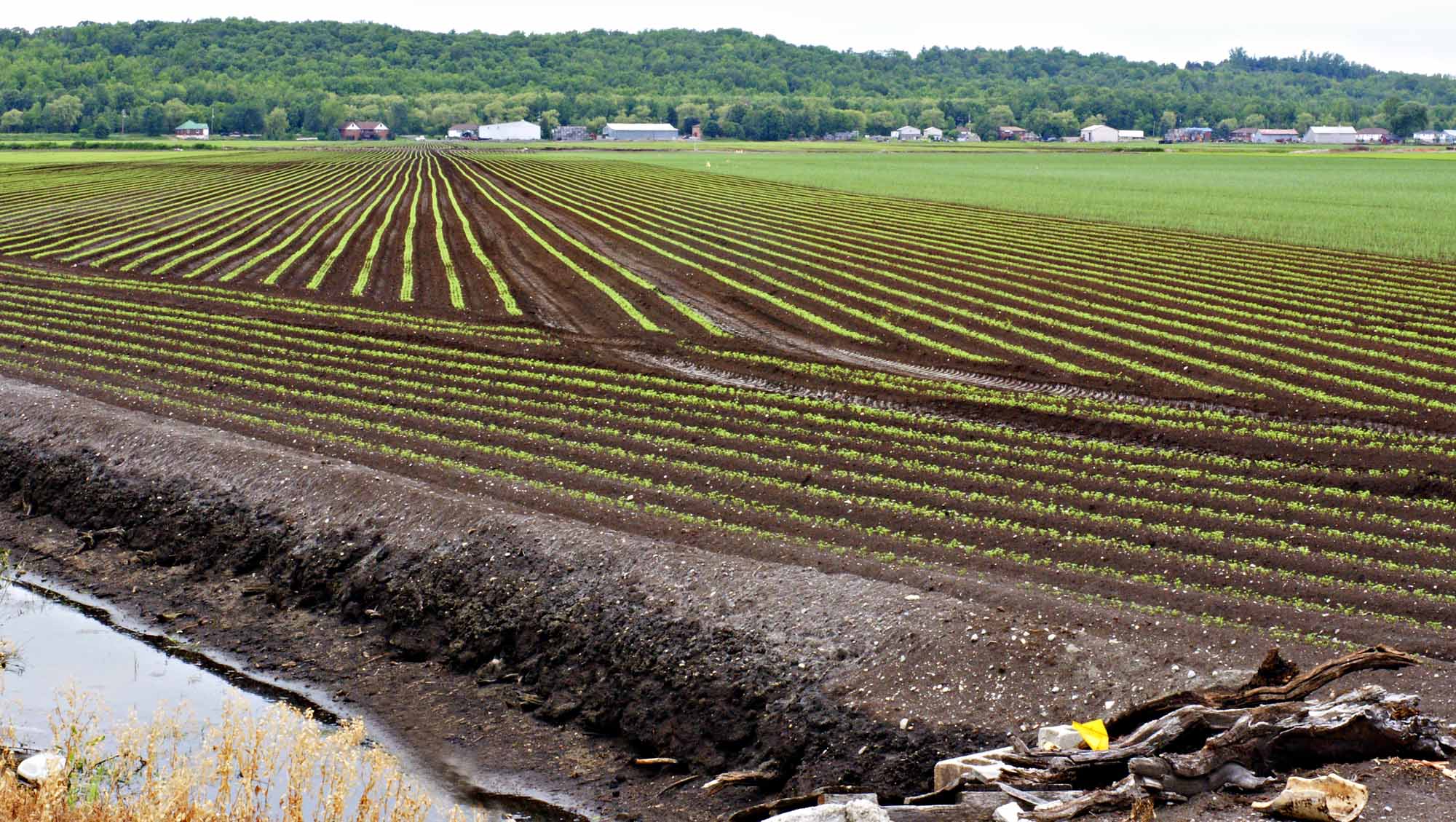Browse "Natural resources"
-
Article
Soil
Soil is the thin, fragile surface layer of Earth. It is a dynamic, loose and porous body of variable thickness (between a few centimetres and a few metres). Soil is formed by continuous transformations of rock or deposit through physical, chemical and biological processes. It is one of the two main components of Earth — the other being oceans — in which life is particularly active. Soil is the source and site of many human activities, and human life greatly depends on it. In Canada, agricultural, environmental and natural-resource scientists are at the forefront of research on soil.
"https://d2ttikhf7xbzbs.cloudfront.net/media/media/01f0989f-5102-44b1-82b6-1b7a44b8ff1d.jpg" // resources/views/front/categories/view.blade.php
https://d2ttikhf7xbzbs.cloudfront.net/media/media/01f0989f-5102-44b1-82b6-1b7a44b8ff1d.jpg
-
Article
Soil Classification
Classification involves arranging individual units with similar characteristics into groups. Soils do not occur as discrete entities; thus the unit of measurement for soil is not obvious.
"https://d2ttikhf7xbzbs.cloudfront.net/media/media/5ab8defa-319b-47f7-a725-b100a41ab8e1.jpg" // resources/views/front/categories/view.blade.php
https://d2ttikhf7xbzbs.cloudfront.net/media/media/5ab8defa-319b-47f7-a725-b100a41ab8e1.jpg
-
Article
Soil Conservation
Soil conservation is a combination of all methods of management and land use that safeguard the soil against depletion or deterioration by natural or human-induced factors.
"https://d2ttikhf7xbzbs.cloudfront.net/media/media/1feca1f5-6d62-4849-ada5-e7b61d404647.jpg" // resources/views/front/categories/view.blade.php
https://d2ttikhf7xbzbs.cloudfront.net/media/media/1feca1f5-6d62-4849-ada5-e7b61d404647.jpg
-
Article
Soil Science
Soil science is the science that deals with soils as a natural resource. Studies focus on soil formation, classification and mapping, and the physical, chemical and biological properties and fertility of soils as such and in relation to their management for crop production.
"https://development.thecanadianencyclopedia.ca/images/tce_placeholder.jpg?v=e9dca980c9bdb3aa11e832e7ea94f5d9" // resources/views/front/categories/view.blade.php
https://development.thecanadianencyclopedia.ca/images/tce_placeholder.jpg?v=e9dca980c9bdb3aa11e832e7ea94f5d9
-
Article
Solar Energy
The energy contained in sunlight is the source of life on Earth. Humans can harness it to generate power for our activities without producing harmful pollutants. There are many methods of converting solar energy into more readily usable forms of energy such as heat or electricity. The technologies we use to convert solar energy have a relatively small impact on the environment. However, they each have disadvantages that have kept them from being widely adopted. In Canada, the use of solar energy to generate electricity and heat is growing quickly and is helping reduce pollution related to energy production. Despite Canada’s cold climate and high latitudes (which get less direct sunlight than mid-latitudes), solar power technologies are used in many places, from household rooftops to large power plants. The Canada Energy Regulator (formerly the National Energy Board) expects solar power to make up 3 per cent of Canada’s total electricity generation capacity by 2040.
"https://d2ttikhf7xbzbs.cloudfront.net/media/media/bfcd57a6-65cf-486a-b845-726de3285690.jpg" // resources/views/front/categories/view.blade.php
https://d2ttikhf7xbzbs.cloudfront.net/media/media/bfcd57a6-65cf-486a-b845-726de3285690.jpg
-
Article
Sustainable Development
Sustainable development has been defined by the United Nations (UN) as development that “meets the needs of the present” while ensuring the future sustainability of the planet, its people and its resources. Meeting these needs often requires balancing three key features of sustainable development: environmental protection, economic growth and social inclusion. The goals of sustainable development are interconnected. The most successful sustainable development projects will include environmental, economic and social considerations in their final plan. These considerations must include the free, prior and informed consent of any Indigenous groups impacted by a sustainable development project.
"https://d2ttikhf7xbzbs.cloudfront.net/media/new_article_images/Sustainability/Planet_earth.jpg" // resources/views/front/categories/view.blade.php
https://d2ttikhf7xbzbs.cloudfront.net/media/new_article_images/Sustainability/Planet_earth.jpg
-
Article
Tidal Energy
Tidal energy is a largely untapped, renewable energy source based largely on lunar gravitation. While the potential of tidal hydroelectricity has long been recognized, compared to river dams, tidal power projects are expensive because massive structures must be built in difficult saltwater environments.
"https://d2ttikhf7xbzbs.cloudfront.net/media/media/20ec66d0-4579-4f2a-942d-5bb87ded61be.jpg" // resources/views/front/categories/view.blade.php
https://d2ttikhf7xbzbs.cloudfront.net/media/media/20ec66d0-4579-4f2a-942d-5bb87ded61be.jpg
-
Article
Trans Mountain Pipeline Expansion Project
The Trans Mountain Expansion is a project to build about 980 km of new pipe, most of which will run parallel to the existing Trans Mountain oil pipeline. The new line will carry diluted bitumen, or “dilbit,” from Edmonton, Alberta to Burnaby, British Columbia. The expansion will increase the pipeline route’s overall capacity from 300,000 barrels per day to 890,000 barrels per day. The project’s first owner, Kinder Morgan Canada, sold it to the Government of Canada in 2018. The Trans Mountain Expansion has been a focus of environmental and economic debates, as well as political conflicts. The $12.6 billion project is now under construction.
"https://d2ttikhf7xbzbs.cloudfront.net/media/new_article_images/TransMountainPipelineExpansionProject/Trans_Mountain_Spread_1_Dec2019.jpg" // resources/views/front/categories/view.blade.php
https://d2ttikhf7xbzbs.cloudfront.net/media/new_article_images/TransMountainPipelineExpansionProject/Trans_Mountain_Spread_1_Dec2019.jpg
-
Article
Zinc
Zinc (Zn) is a bluish-white metal of low to intermediate hardness that melts at 419°C and is estimated to comprise about 0.013% of the earth's crust. Zinc is an essential element for human health; over 200 enzymes in the body require zinc for proper functioning.
"https://development.thecanadianencyclopedia.ca/images/tce_placeholder.jpg?v=e9dca980c9bdb3aa11e832e7ea94f5d9" // resources/views/front/categories/view.blade.php
https://development.thecanadianencyclopedia.ca/images/tce_placeholder.jpg?v=e9dca980c9bdb3aa11e832e7ea94f5d9
